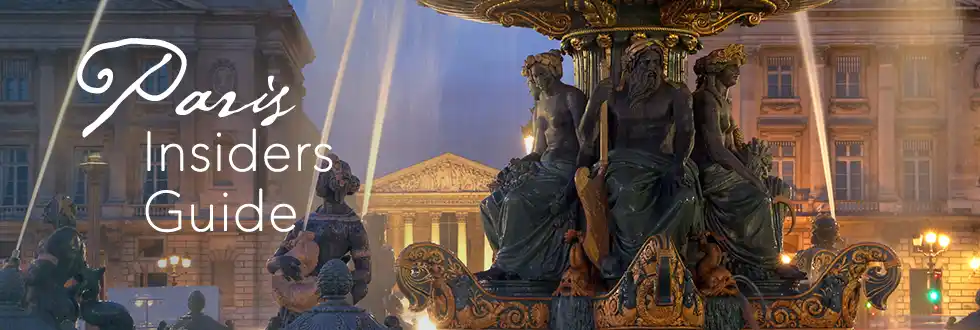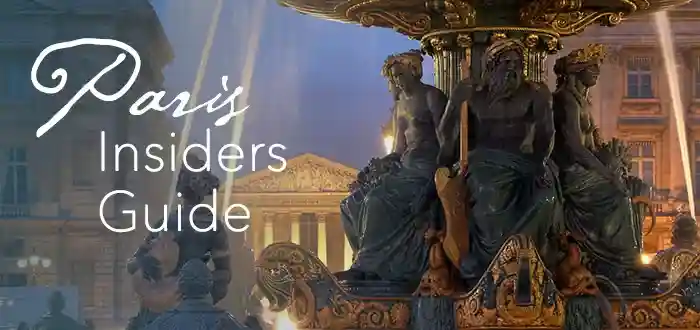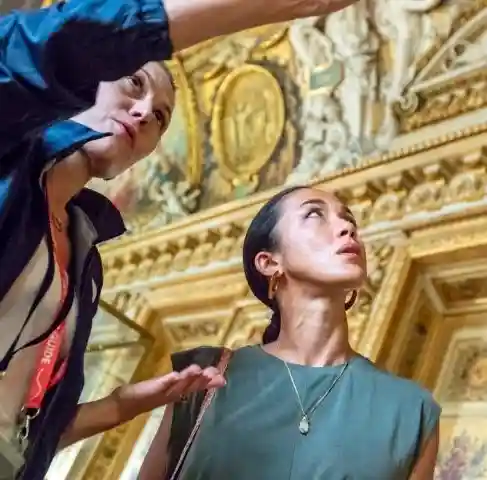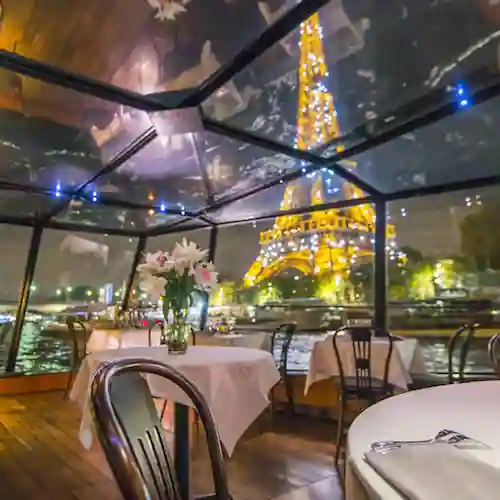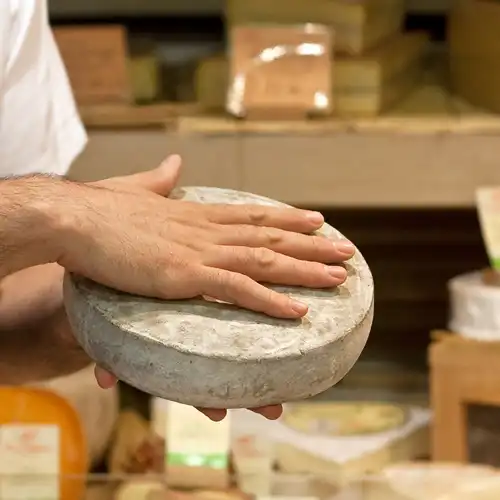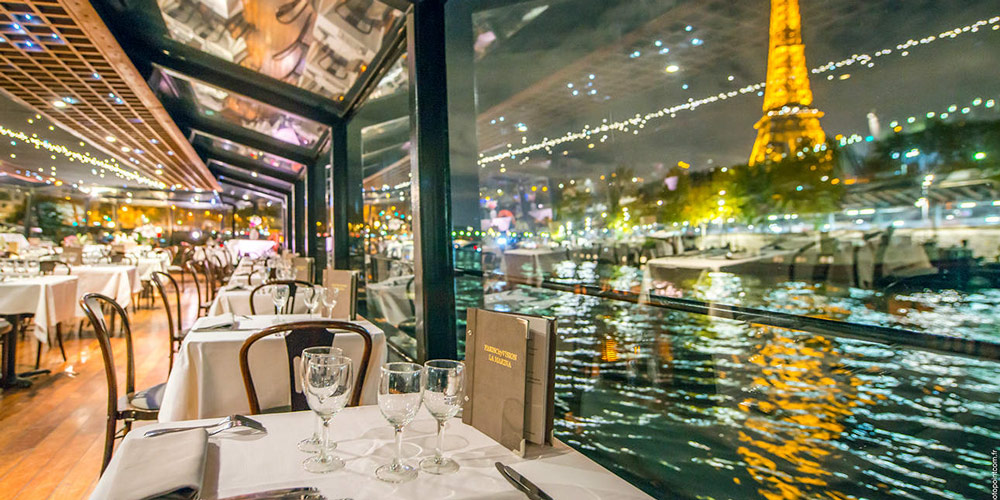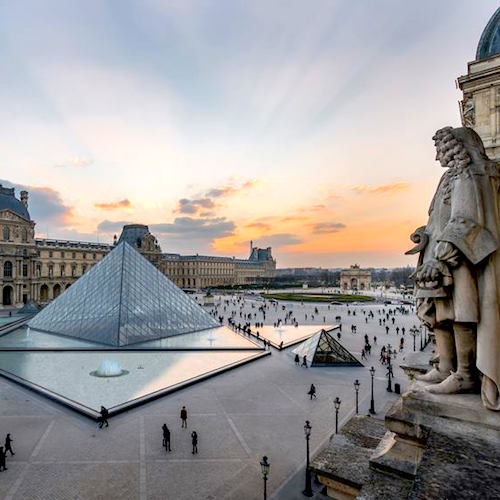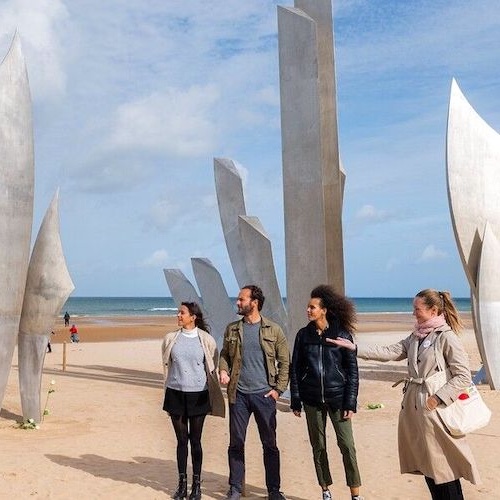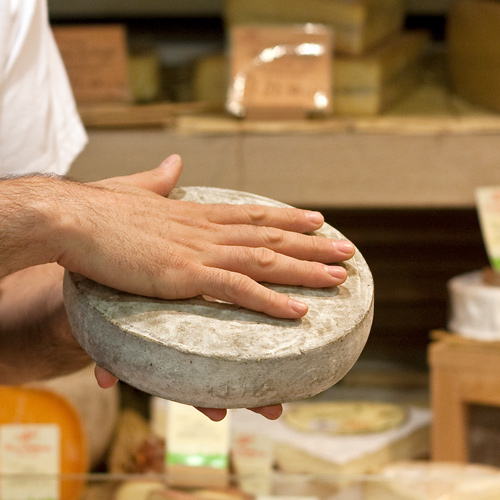Archaeological Crypt of Notre Dame – Paris's Time Machine
Beneath the stone shoulders of Notre Dame Cathedral, there's a whole other Paris you don't see on postcards. The Archaeological Crypt of Notre Dame reveals the ancient bones of the city — Roman roads, medieval walls, and remnants of lives lived centuries ago. It's one of the most fascinating Paris hidden archaeological sites, a place where history stops holding still and starts whispering directly into your ear.
This isn't just another museum; it's a literal time machine. Within a few steps, you move from Gallo-Roman Paris to bustling medieval streets, Renaissance institutions, and traces of 19th-century urban redesign. Down here, among the Roman ruins beneath Notre Dame Paris, you'll start to understand how Paris became Paris.
![]()
Discover What's On When You're Here...
• January... |
• February... |
• March... |
• April... |
• May... |
• June... |
• July... |
• August... |
• September... |
• October... |
• November... |
• December... |
Discover What's On When You're Here
• January...
|
• February... |
• March... |
|---|---|---|
• April... |
• May... |
• June... |
• July... |
• August... |
• September... |
• October... |
• November... |
• December... |
The Discovery of the Archaeological Crypt of Notre Dame
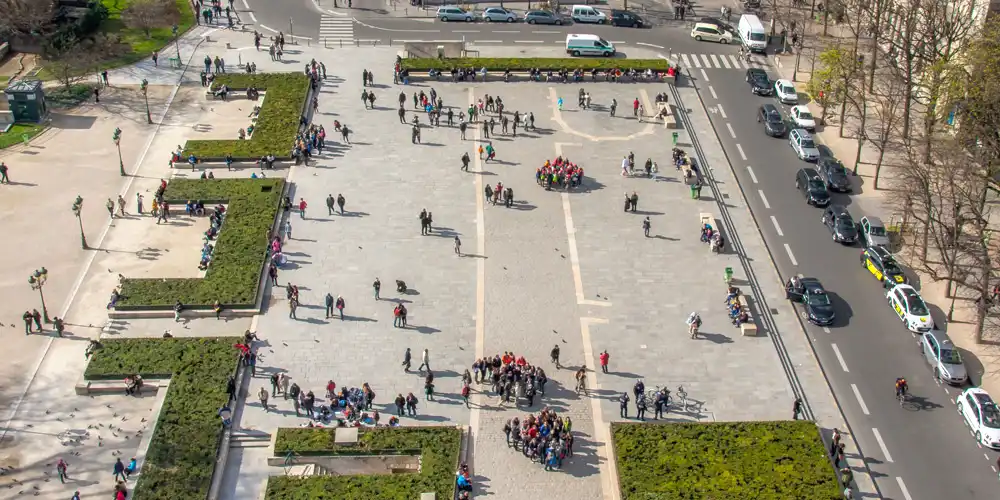 The parvis as seen from the bell towers in 2012. The crypt is just beyond the last row of greenery.
The parvis as seen from the bell towers in 2012. The crypt is just beyond the last row of greenery.
In the 1960s, Paris was in its let's-modernize-everything mood, and the plan was to build an underground parking garage in the parvis (square) in front of Notre Dame. Amazingly, the parvis itself was being used as a parking lot! Enter the backhoes… and then the shovels… and then, oops — there's an entire buried city down there!
From 1965 to 1972, archaeologists uncovered layer after layer of urban evolution beneath the Notre-Dame Cathedral square. They found fragments of Gallo-Roman Paris, when the settlement was called Lutetia, alongside medieval street foundations and evidence of the city's 19th-century transformation. Turns out, Paris had been demolished and rebuilt so many times that the ground beneath Notre Dame was practically an historical lasagna.
So, in 1980, instead of paving over the ruins, Paris opened the site as the Archaeological Crypt of Notre Dame. It wasn't just about preserving artifacts — it was about preserving context. This isn't a random collection of broken pottery; it's the blueprint of Paris's transformation. Every layer tells a story of ambition, disaster, survival, and reinvention.
What You'll See Underground
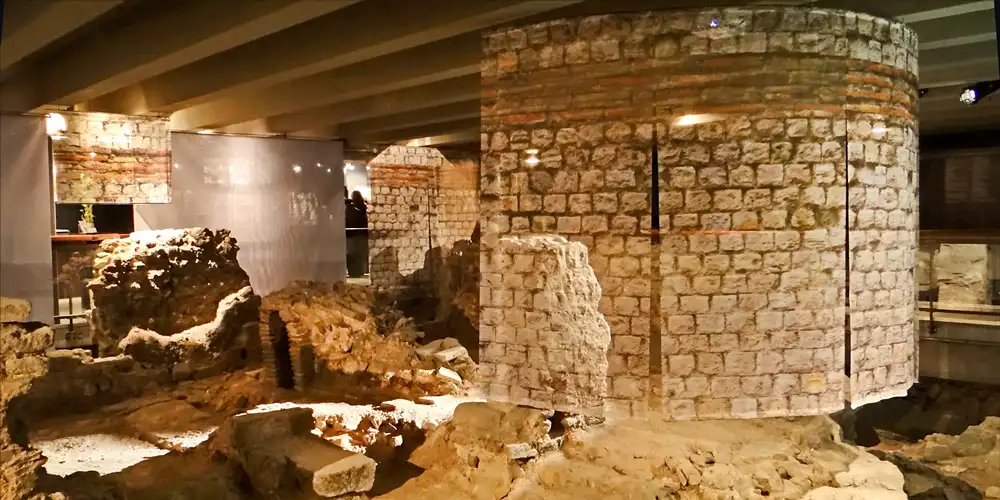 Remains of 4th century thermal bath, photo Wikimedia by Jean Pierre Dalbéra
Remains of 4th century thermal bath, photo Wikimedia by Jean Pierre Dalbéra
The Archaeological Crypt of Notre Dame isn't massive by museum standards — about 2,000 square meters stretching nearly 200 meters under the cathedral square — but what it lacks in size, it makes up for in narrative punch.
The real showstoppers are the Roman ruins beneath Notre Dame parvis: wharves and docks from ancient Lutetia, bathhouses complete with underfloor heating systems, paved streets that once rang with carts and sandals, and stout defensive walls built against invading tribes. If you've ever wondered where Gallo-Roman Paris kept its plumbing, heating, and waterfront commerce — this is the answer.
You'll also stumble across other centuries layered in:
- Foundations of the Hospice des Enfants-Trouvés, a Renaissance orphanage whose history is both tragic and fascinating.
- Ghost traces of medieval streets teeming with traders and pilgrims heading to the cathedral.
- Remnants of the Hôtel Dieu hospital's ancient chapel basement.
- 19th-century sewer lines courtesy of Baron Haussmann, an early and enthusiastic crusader against Parisian epidemics.
Between architectural models, unearthed coins, and immersive multimedia, the crypt gives you a clear picture of the city's constant reinvention. You can almost see ancient Lutetians steaming in bathhouses where modern Parisians now sip espresso by the Seine.
![]()
Paris's Underground Memory Bank
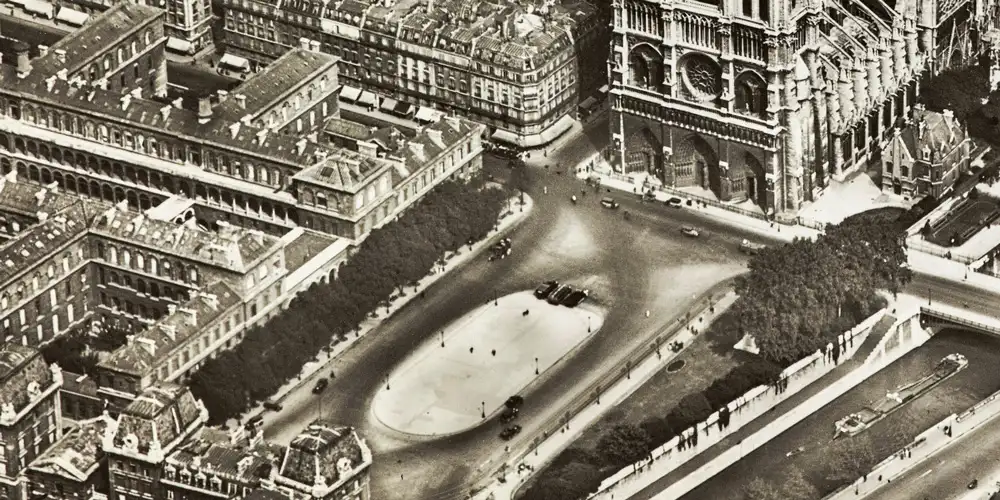 The parvis in 1944. For much of the 20th century, it was a roadway and parking lot.
The parvis in 1944. For much of the 20th century, it was a roadway and parking lot.
Walking through the Archaeological Crypt of Notre Dame, you're not looking at rocks — you're looking at the city's memory. Every wall, every foundation, every shard of pottery has its own voice.
Here's where you get answers to questions you didn't know you had: How did the Parisii tribe turn this tiny island into a thriving marketplace? Why were Roman bathhouses so elaborate? What kind of defenses did Parisians throw up when “barbarian invasions” weren't just medieval bedtime stories?
The Notre Dame Paris underground ruins don't just document Paris's development — they humanize it, they bring it to life. These aren't abstractions; they're fingerprints left behind by thousands of lives. The Archaeological Crypt of Notre Dame shows you the line that runs from from trade and faith to survival and ambition. Above you, tourists snap selfies; down here, Paris whispers back across two millennia.
Museum Highlights & Exhibitions
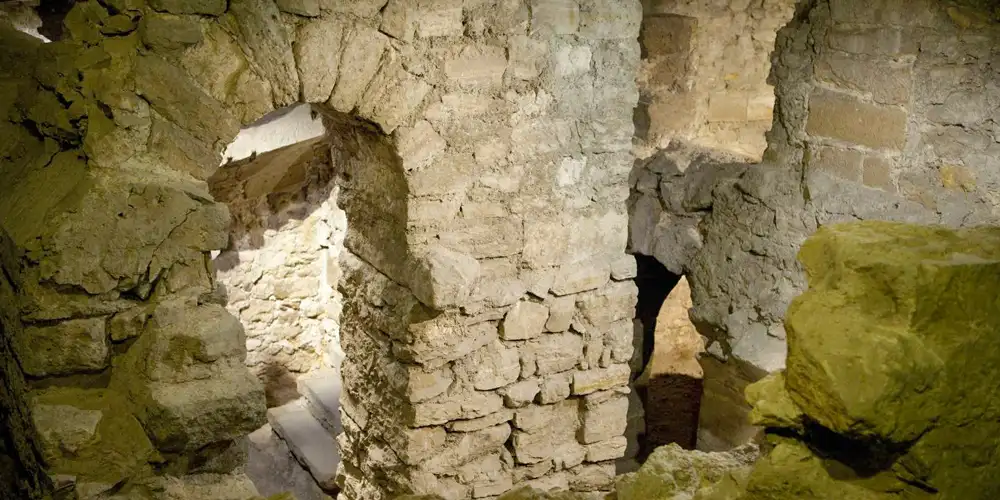 Stairs leading to an ancient wharf, now 50 meters from the Seine, photo by Stéphane Piera
Stairs leading to an ancient wharf, now 50 meters from the Seine, photo by Stéphane Piera
Think of the Archaeological Crypt less like a dusty repository and more like Paris's tech-savvy storyteller. Modern upgrades have turned it into an interactive journey: touchscreen displays, 3-D reconstructions of lost streets, and animated maps that rebuild entire neighborhoods before your eyes.
Temporary exhibitions keep the content fresh. Past shows have traced objects dredged from the Seine or highlighted new archaeological techniques used in uncovering Gallo-Roman Paris. If you're an enthusiast for Paris hidden archaeological sites, this is one museum where repeat visits actually pay off.
Guided tours elevate the experience further. Some are even led by archaeologists who worked on the site, giving you anecdotes no exhibit label can match. They'll point out overlooked details, share personal discoveries, and paint a vivid picture of what it's like to literally unearth history.
And here's an underrated perk: the crypt is cool and quiet year-round, making it a sanity-saving escape during the heat of summer — or simply a brilliant Plan B when Paris decides to rain chats et chiens.
![]()
|
Paris Dinner Cruises on the Seine Dine in style as you glide past the Eiffel Tower, Notre-Dame, and the Louvre on a magical Seine River cruise. Gourmet food, champagne, and Paris lit up at night – it’s unforgettable. |
|
Paris Dinner Cruises on the Seine Dine in style as you glide past the Eiffel Tower, Notre-Dame, and the Louvre on a magical Seine River cruise. Gourmet food, champagne, and Paris lit up at night – it’s unforgettable. |
Tips for Your Visit
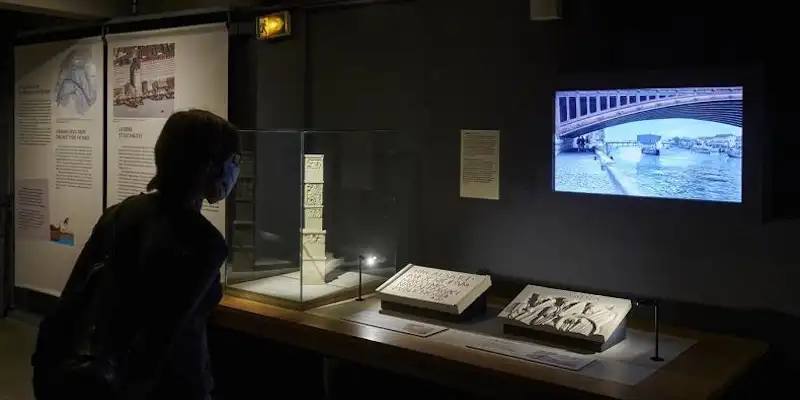 The crypt museum is filled with explanatory exhibits
The crypt museum is filled with explanatory exhibits
If you're building a Paris itinerary and want something truly unique, the Archaeological Crypt of Notre Dame should be at the top of your list. Beyond the thrill of standing on Roman roads and medieval walkways, it's the perspective shift that lingers. Seeing how many times Paris has reinvented itself gives you a deeper appreciation for the city above your head.
History nerds, yes, you'll love it…but so will kids, architecture buffs, and anyone curious about the city's many lives. It's also one of the easiest Paris hidden archaeological sites to access, sitting right on the Île de la Cité next to Notre Dame.
Want to make the day even better? Pair your visit with a walking tour of the Île de la Cité, where landmarks like Sainte-Chapelle and the Conciergerie are just steps away. Or take a Seine River cruise and look out at the very quays that Roman traders once depended on. Context doesn't get much richer.
By the time you emerge back into daylight, you'll have traced Paris's entire journey — from a cluster of huts on the Seine to a sprawling modern metropolis. Those Roman ruins beneath Notre Dame Paris are more than ancient curiosities; they're reminders that Paris has always been in motion.
The City Beneath the City
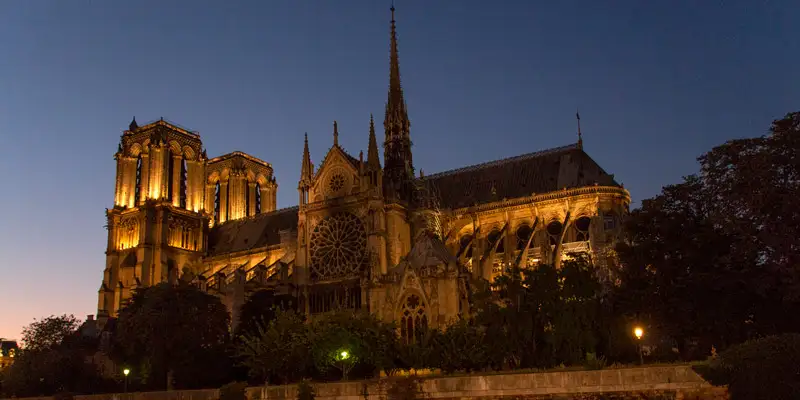 Notre Dame from the Seine, 2018, photo by Mark Craft
Notre Dame from the Seine, 2018, photo by Mark Craft
The Archaeological Crypt of Notre Dame is where the city drops its guard and shows you its deepest secrets. Beneath Notre Dame's soaring towers lie the Notre Dame Paris underground ruins—ancient streets, Roman bathhouses, defensive walls, and traces of lost neighborhoods.
Multimedia exhibits, coins, models, and clever reconstructions bring the story to life as you wander through layers of history. This isn't just for history buffs; it's one of the most remarkable Paris hidden archaeological sites for anyone curious about the city's origins. Come for the cathedral; stay for the Paris that still sleeps beneath your feet.
- 1, Place du Parvis de Notre-Dame
- 4th Arrondissement: Île de la Cité
- Website…
![]()
|
Browse our hand-picked Paris hotel deals with real-time discounts of up to 20%. Stay in the Marais, Saint Germain, the Latin Quarter, the Left Bank near the Eiffel Tower… every arrondissement is on the list. |
|
Browse our hand-picked Paris hotel deals with real-time discounts of up to 20%. Stay in the Marais, Saint Germain, the Latin Quarter, the Left Bank near the Eiffel Tower… every arrondissement is on the list. |
